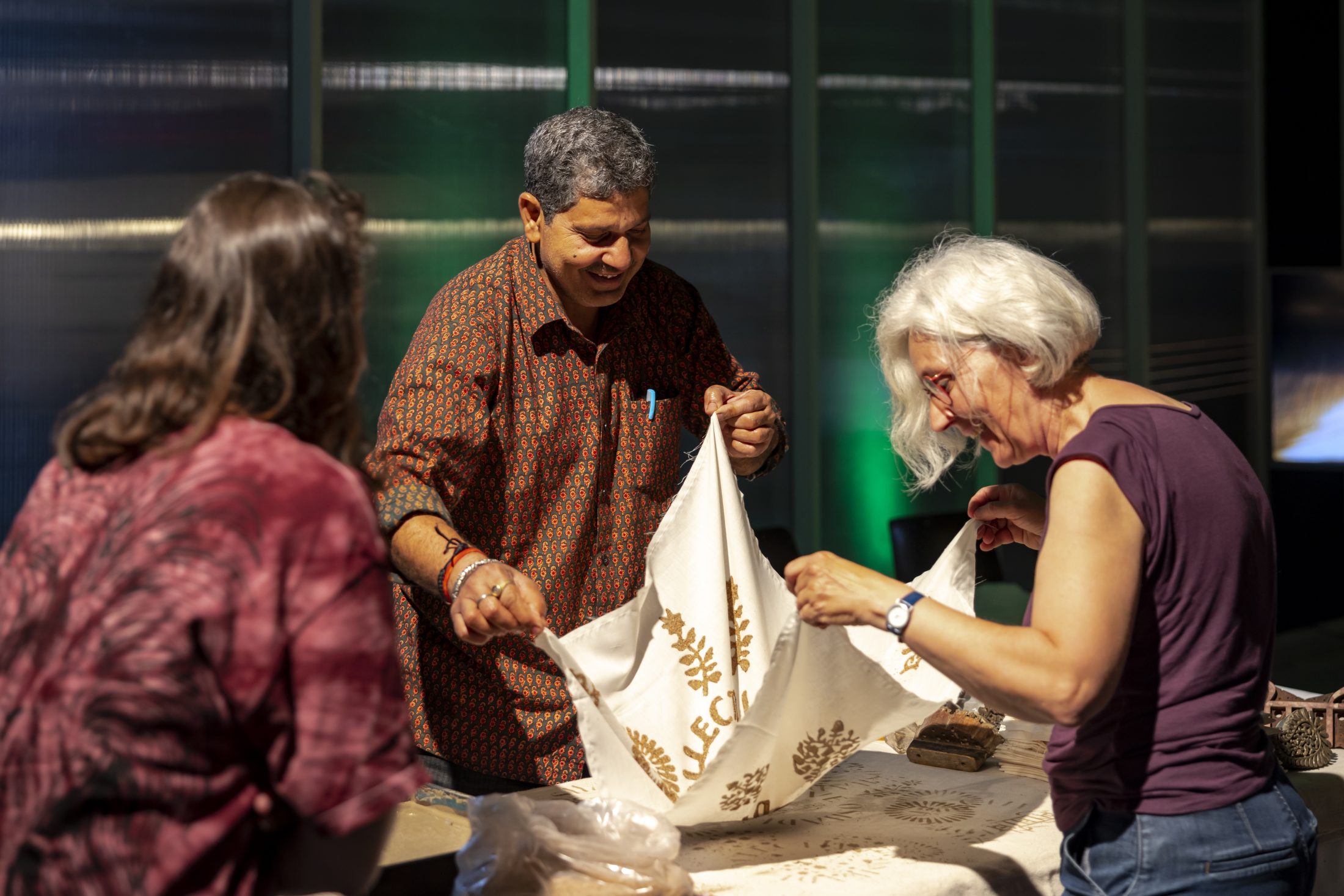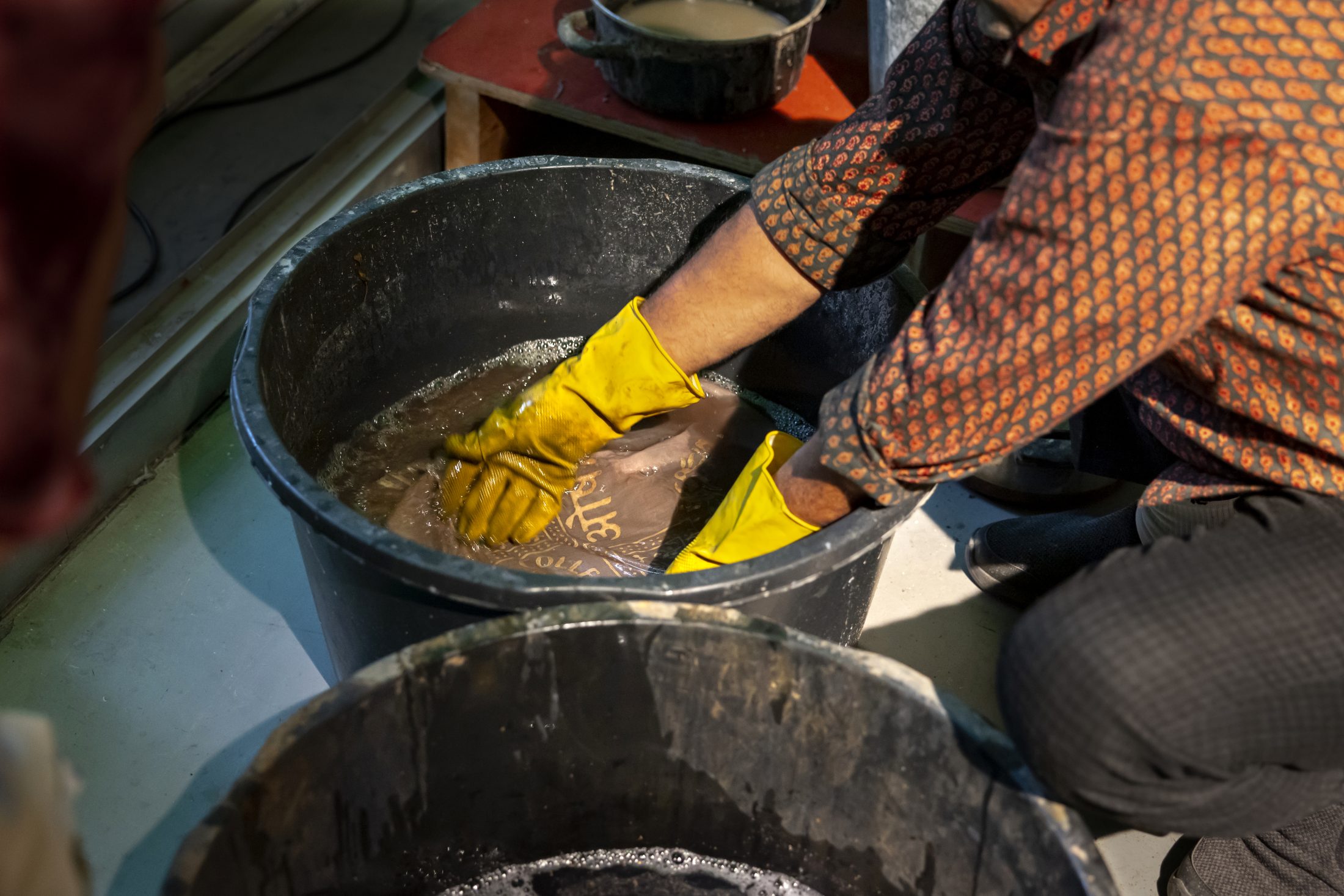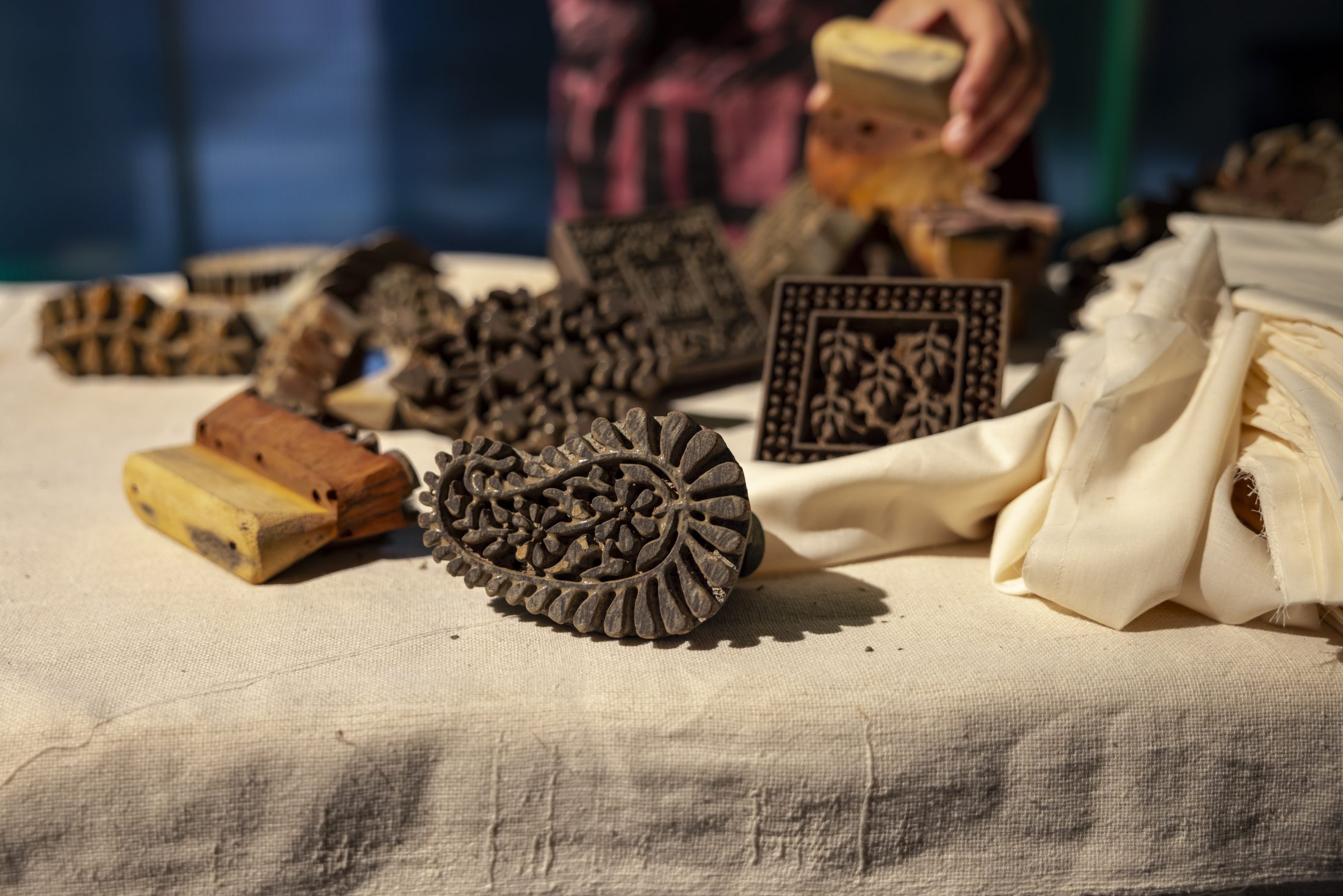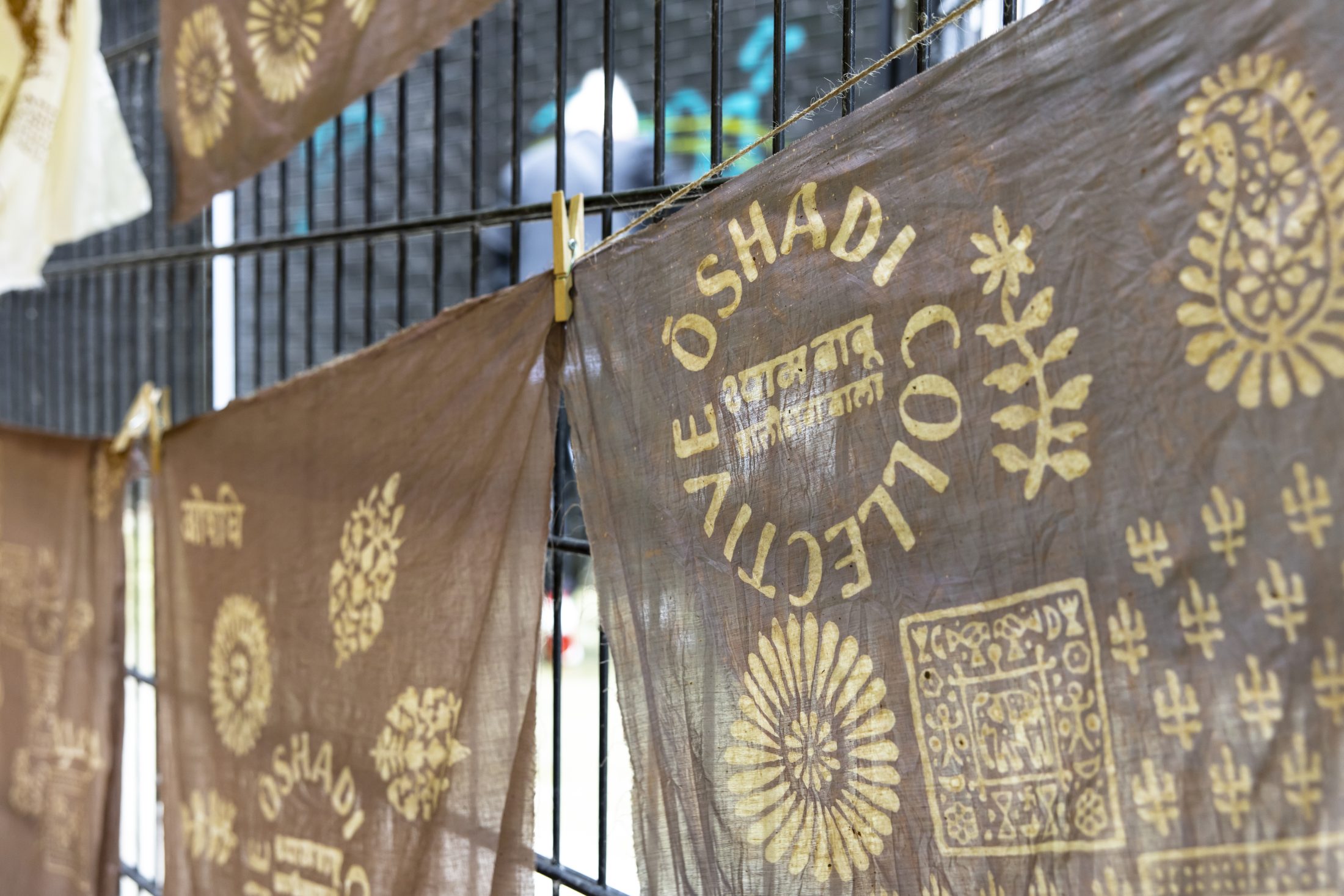During the Biennale the Recovery Garden served as a place where we could bring our clothes into contact with nature again. Through weekly workshops given by three partners whom we linked with this part of the programme, visitors could enjoy the alchemy that takes place in turning flowers, herbs and leaves into natural colouring agents for textiles. Clothing and textiles should not harm people or the planet. The industry has caused a lot of damage, but it can also contribute to recovery. We urgently need to invest in the development of a wide range of biodegradable materials as an alternative to harmful synthetic textiles and to invest in harmless, natural colouring agents and dyeing methods.
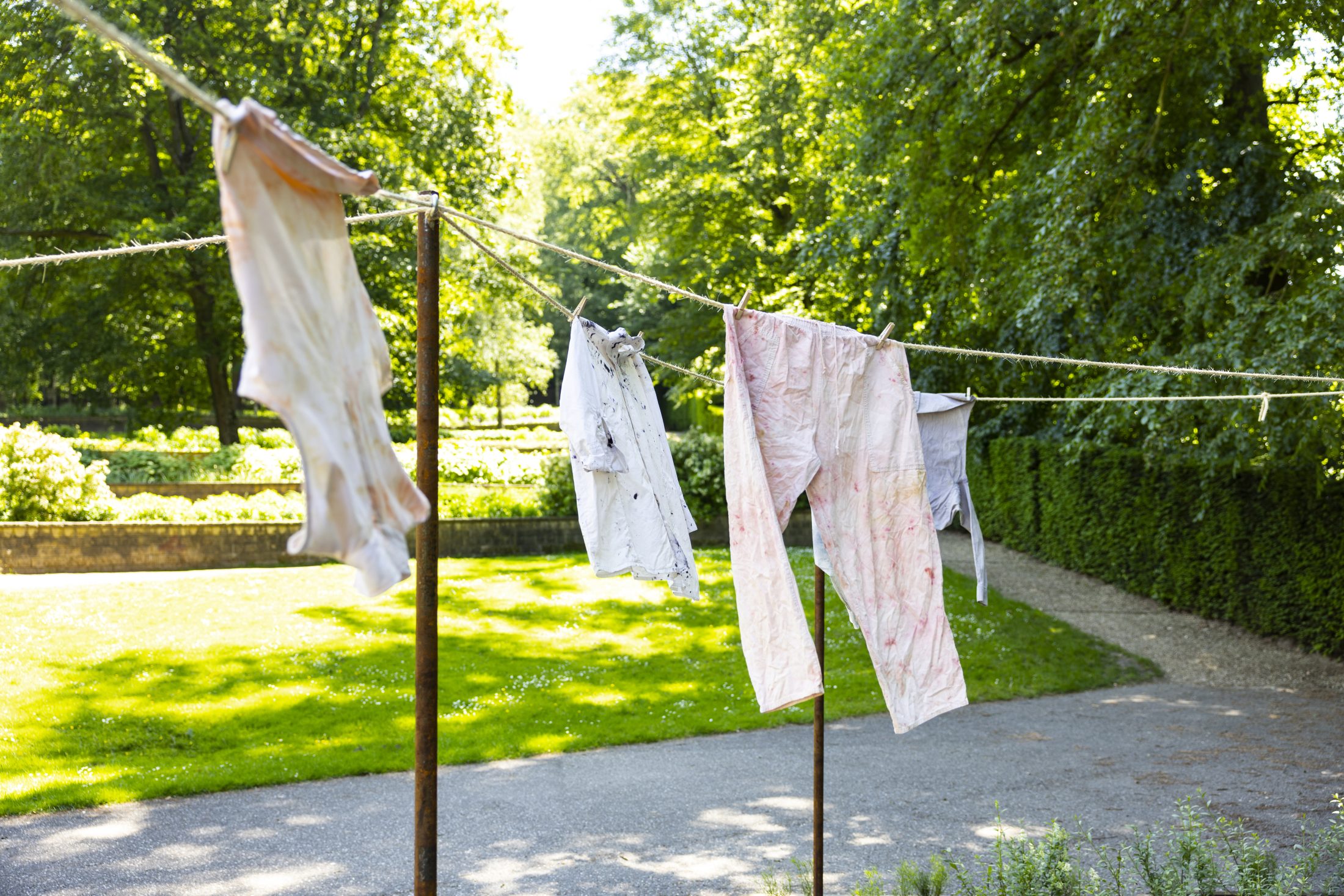
We developed the Recovery Garden in collaboration with the Hul le Kes Recovery Studio, a repair studio for both people and textiles. The perfectionism that our society demands from people and textiles causes a lot of damage. The current fashion system causes a lot of pollution and produces far too much. It also gives rise to social exclusion, feelings of inferiority, burnouts and depressions among people. The Hul le Kes Recovery Studio was established to provide a place for those who require a slower and safer environment. A place for self-development and social contact. Hul le Kes demonstrates that a system in which competition and exploitation play no role is indeed possible. From the ground to the wardrobe: a wealth of colour, made by nature. During the Biennale, Hul le Kes held ten workshops about natural colouring, for both primary school children and students and adults.

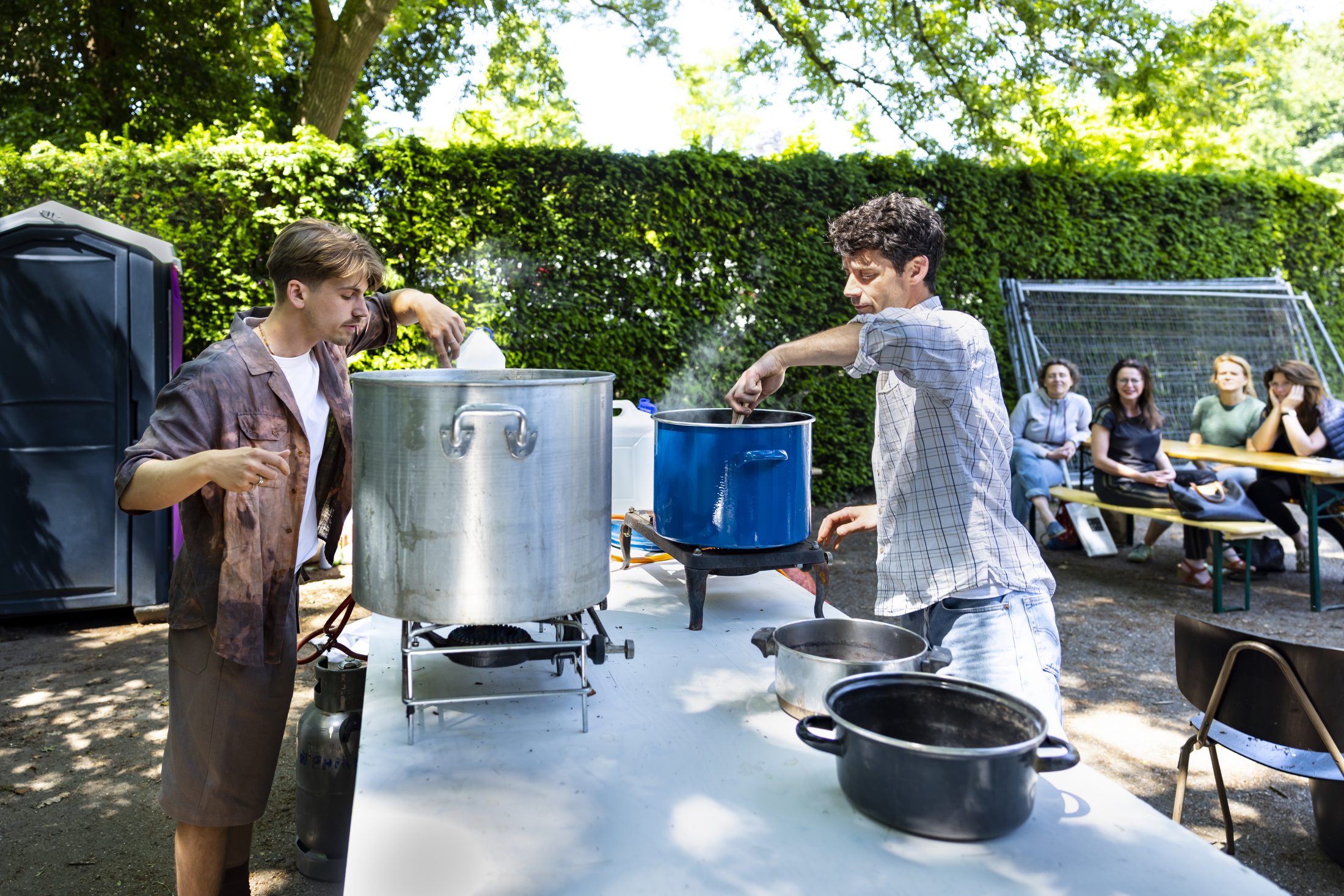
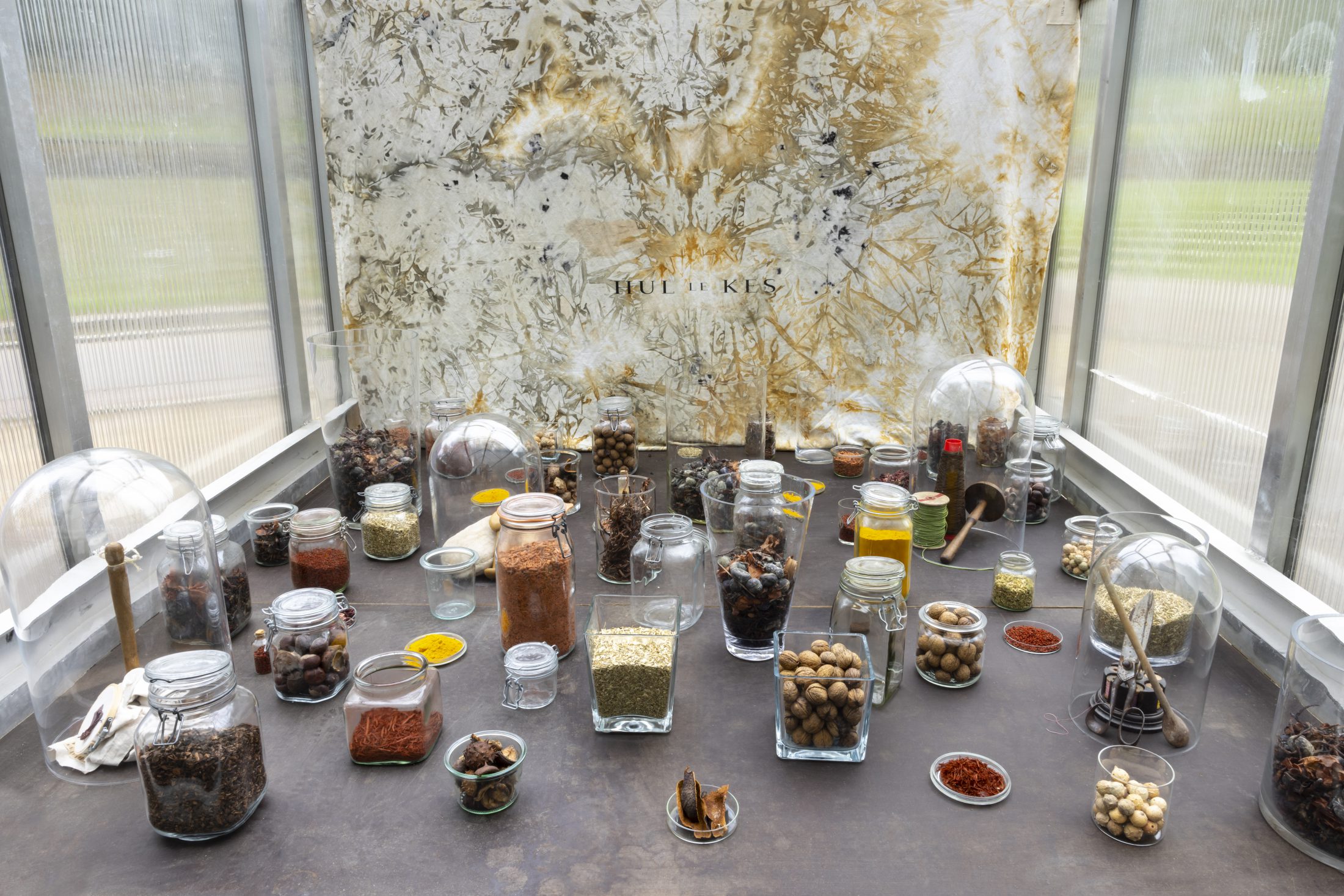
Stichting Fibershed Nederland, our second partner in this story, develops regional fibre systems that build up the soil and protect the health of our biosphere. As a thought leadership network and advocacy body that focuses on multi-sector collaboration, Fibershed sees it as its mission to mobilize and guide the fashion industry in rebuilding and strengthening local textile supply chains on the basis of social, circular and regenerative values.
Fibershed advocates a greater range of and variation in natural fibres and the local production of high-quality biodegradable textiles and clothing. During the Biennale, various talks and guided tours encouraged visitors to discover how innovative companies and pioneers develop new methods to colour textiles naturally on the basis of old techniques and new innovations. These examples from the Fibershed’s international network offered insight into what is already possible and how researchers, artisans and companies can invest in natural colour solutions that not only offer an extraordinary range of colours but also contribute to nature restoration and biodiversity.

The third party we invited to make a contribution to Recovery Garden was the Oshadi Collective from India. Oshadi means ‘essence of nature’ or ‘healing plant’ in Sanskrit. The plant-to-print project started as a fashion label for women, founded in 2016 by Nishanth Chopra. His desire to respect and regenerate the earth forms the basis for each process involved in making clothing – from printing and dyeing to weaving and spinning – and finally back to the earth. Chopra is cultivating a new fashion system that is rooted in ancient Indian agricultural practices and craft heritage, with at its core a 200-hectare regenerative cotton farm.
The Oshadi system tackles everything from pollution to the treatment of people with respect and dignity. During its stay in Arnhem, Oshadi shared its knowledge with local brands and designers whose values correspond with its simple ethos: give more and you take from the earth. Moreover, Nishanth Chopra and master block-printer Shyamji Bhai gave a series of workshops in the Recovery Garden on 4 and 5 June, in which they demonstrated the old craft of block printing and discussed the process of natural dyeing, from plant to print.
